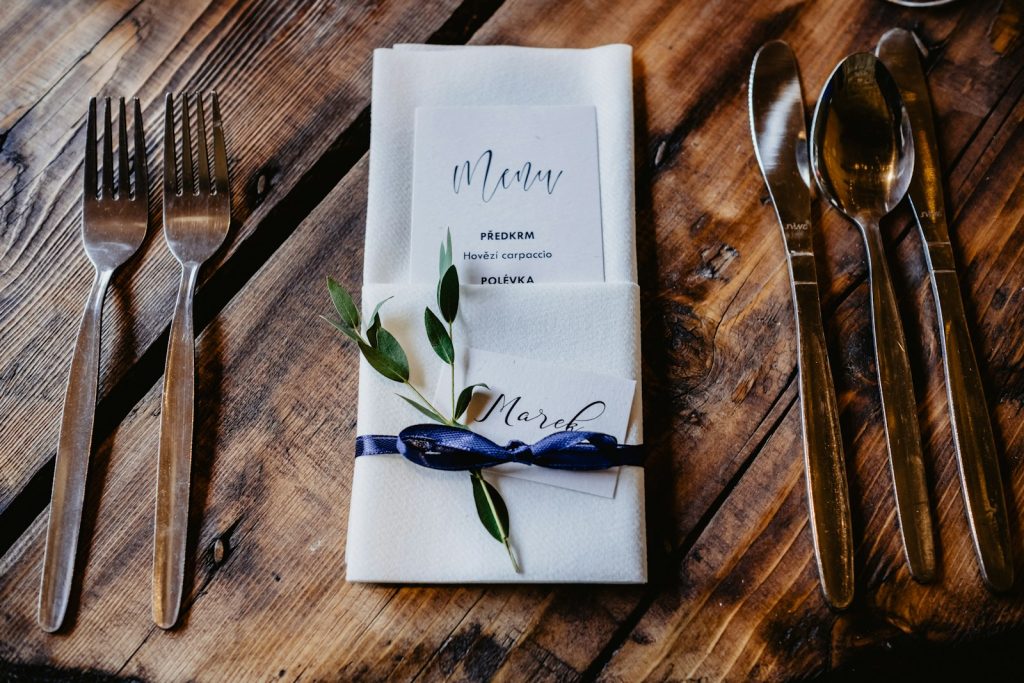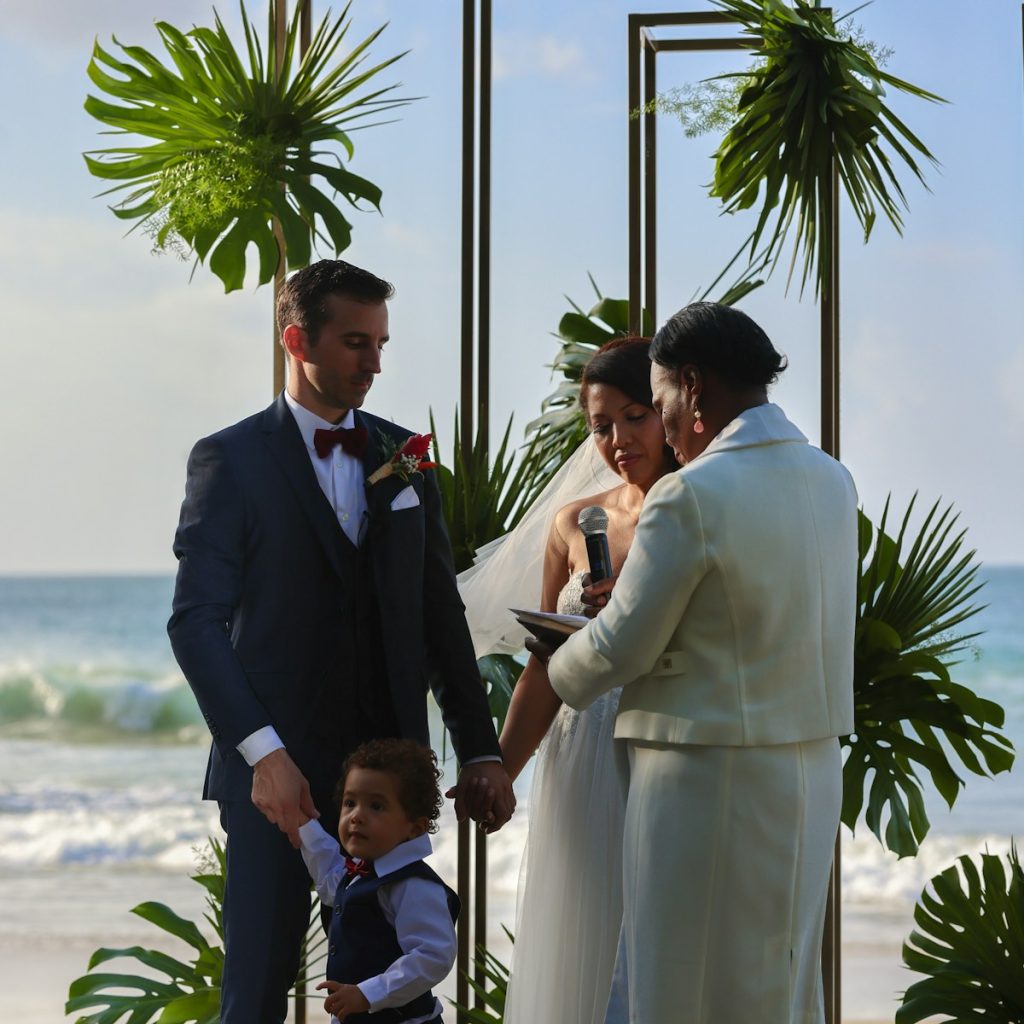Planning a wedding involves many decisions, from finding the Best Wedding Catering Services to arranging the cakes and decoration but but one of the most crucial aspects is the customised wedding menus planning. A well-structured menu not only satisfies your guests but also complements the theme and ambiance of your celebration. Whether you’re dreaming of a buffet-style dinner or a gourmet grazing table, planning the perfect wedding menu ensures that your guests will remember your special day fondly.
A well-thought-out wedding menu takes into account various factors such as guest preferences, dietary restrictions, and budget considerations. Whether you opt for traditional dishes or contemporary cuisine, Involving Your Partner in Wedding Planning will help you manage costs and ensure a smooth dining experience. By considering options like family-style service, food stations, and themed menus, you can tailor the dining experience to match the ambiance of your celebration.
Popular Wedding Menu Structure
A typical wedding menu consists of several key components:
- Appetizers: Canapés, hors d’oeuvres, and finger foods.
- Main Courses: Usually a choice between a meat, fish, and vegetarian dish.
- Desserts: Sweet treats to end the meal on a high note.
- Late-Night Snacks: Comfort foods to keep the energy high during the reception.
Example Menu Layout
| Course | Options |
|---|---|
| Appetizers | Wild Mushroom Arancini, Charcuterie Boards, Prawn Cocktail, Crab Mango Salad, Caprese Salad Skewers |
| Main Courses | Honey & Bourbon Roast Chicken, Beef Tenderloin, Mushroom Risotto, Seared Pork Loin with Root Vegetables, Barbecue Brisket, Grilled Vegetable Skewers |
| Desserts | Eton Mess, Sticky Toffee Pudding, Pumpkin Macarons, Berry Cobbler, Lemon Blueberry Sponge Cake, Chocolate Brownies |
| Late-Night Snacks | Loaded Fries, Mac n Cheese, Mini Burgers, Pizza, Spicy Chicken & Chorizo Paella, DIY Taco Bar |
Popular Menu Items
Incorporating popular and trending dishes can make your menu stand out. Here are some favorites:
- Appetizers: Wild Mushroom Arancini, Filo Tarts with Butternut Squash, Crab Mango Salad.
- Main Courses: Honey & Bourbon Roast Chicken, Seared Pork Loin with Root Vegetables, Barbecue Brisket.
- Desserts: Mini Pumpkin Tartlets, Berry Cobbler, Chocolate Brownies.
- Late-Night Snacks: Loaded Fries, Mac n Cheese, Spicy Chicken & Chorizo Paella.
Wedding Styles and Corresponding Menu Ideas
| Wedding Style | Menu Ideas |
|---|---|
| Formal/Black-Tie | Plated dinners with gourmet dishes like filet mignon, lobster, and truffle-infused sides. |
| Rustic/Outdoor | Barbecue, farm-to-table dishes, and seasonal vegetables served family-style or as a buffet. |
| Casual/Laid-Back | Food stations with tacos, sliders, and casual finger foods. |
| Beach | Seafood-focused menu with grilled fish, shrimp cocktails, and tropical fruit salads. |
| Garden/Whimsical | Light and fresh options like salads, herb-crusted chicken, and floral-decorated desserts. |
Understanding Your Audience And Guests

Planning a wedding menu can be both exciting and daunting. The importance of menu planning for weddings cannot be overstated, as it plays a pivotal role in the overall success of your event. From buffet-style dinners to elegant plated meals, the choices you make will reflect your personal taste and the style of your wedding. This guide will cover a comprehensive range of wedding food ideas, ensuring that your guests are satisfied and delighted.
Analyzing Guest List Demographics and Preferences
Understanding your guest list is the first step in creating Delicious Wedding Menu Options. Consider the demographics and preferences of your guests. Are there more young adults, elderly guests, or children? This will influence the types of food and the style of service you choose.
Considering Dietary Restrictions and Allergies
In today’s diverse culinary landscape, it is crucial to accommodate dietary restrictions and allergies. Offering a variety of options such as vegetarian, vegan, gluten-free, and nut-free dishes will ensure that all guests can enjoy the meal.
Gathering Guest Input on Food Preferences Through RSVPs
One effective way to gather information about your guests’ dietary needs is to include a section on the RSVP card for them to note any Special Dietary Needs restrictions or preferences. This proactive approach will help you plan a menu that caters to everyone’s needs.
How to plan for Menu Styles?
Ultimately, the key to a successful wedding menu lies in balancing these elements to create a cohesive, enjoyable experience for everyone. By leveraging the insights and tips provided in this guide, you can craft a wedding feast that will be remembered fondly by all your guests.
Incorporating Themes
Match your menu with your wedding theme by using colors, motifs, and specific ingredients that resonate with the overall aesthetic. For instance, a beach wedding might feature a seafood buffet with tropical flavors, while a rustic wedding could offer hearty, farm-style dishes.
Buffet-Style Dinner
Buffet-style dinners are popular for their variety and ease of service. Guests can choose from a wide array of dishes, allowing for Customizable wedding catering and higher satisfaction.
Pros:
- Offers a wide variety of food
- Guests can serve themselves
- Easier to cater to dietary restrictions
Cons:
- Can be more expensive due to the variety of dishes
- Requires more space for the setup
Plated Dinner
Plated dinners offer a more formal dining experience, with guests served at their tables.
Pros:
- Elegant and formal catering presentation
- Controlled portion sizes
Cons:
- Limited food options for guests
- More staff required for serving
Family-Style Service
Cost Considerations for Family-Style Catering means medium to large platters of food placed on each table for guests to share, creating a communal and cozy atmosphere.
Pros:
- Encourages guest interaction
- More relaxed and intimate
Cons:
- Can be difficult to manage portion control
- Requires more table space
Food Stations and Grazing Tables is a great wedding menu idea
Food stations and grazing tables offer interactive and customizable dining experiences. Popular Modern Wedding Menu Ideas include taco bars, pasta stations, and elaborate charcuterie boards.
Pros:
- Interactive and fun for guests
- Allows for a wide variety of options
Cons:
- Requires more planning and setup
- Can be more expensive
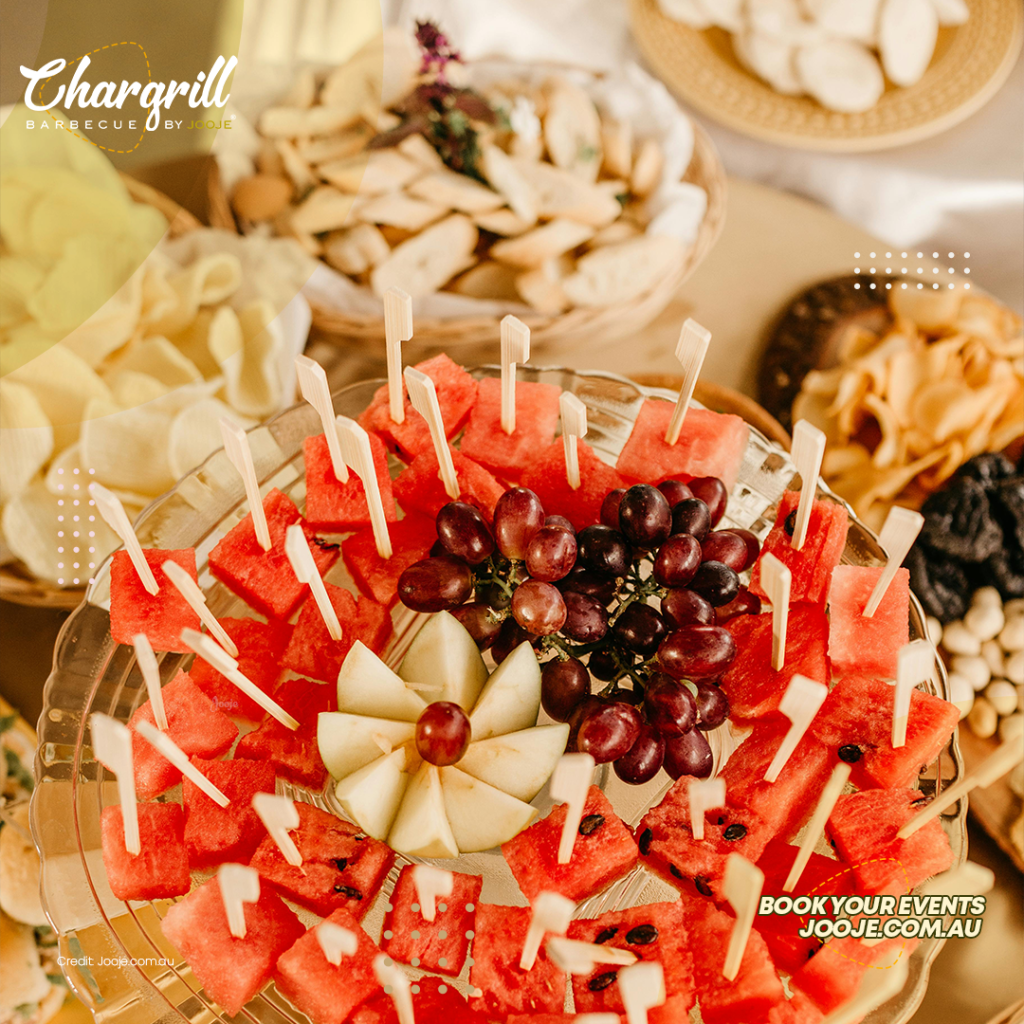
Appetizers and Starters
Popular Choices and Presentation Tips
Appetizers set the tone for the meal and should be both delicious and visually appealing. Popular choices include:
- Caprese Skewers: Fresh mozzarella, cherry tomatoes, and basil drizzled with balsamic glaze.
- Mini Crab Cakes: Bite-sized crab cakes served with a tangy remoulade sauce.
- Stuffed Mushrooms: Mushrooms filled with a savory mixture of cheese, herbs, and breadcrumbs.
Seasonal Menus for weddings
Using seasonal ingredients can enhance the flavor of your dishes and reduce costs. Here are some seasonal menu ideas:
Spring Menu
- Appetizers: Asparagus Tartlets, Fresh Spring Rolls.
- Main Courses: Lemon Herb Chicken, Grilled Salmon with Spring Vegetables.
- Desserts: Lemon Meringue Pie, Strawberry Shortcake.
Summer Menu
- Appetizers: Caprese Salad Skewers, Crab Mango Salad.
- Main Courses: Barbecue Brisket, Grilled Vegetable Skewers.
- Desserts: Berry Cobbler, Lemon Blueberry Sponge Cake.
Fall Menu
- Appetizers: Cranberry and Brie Charcuterie Board, Pumpkin Soup.
- Main Courses: Seared Pork Loin, Mushroom Risotto.
- Desserts: Pumpkin Macarons, Apple Tartlets.
Winter Menu
- Appetizers: Warm Butternut Squash Soup, Spinach and Artichoke Dip.
- Main Courses: Beef Tenderloin, Honey & Bourbon Roast Chicken.
Variations and Ingredient Highlights for Seasonal Wedding Menu Planning
Using seasonal ingredients ensures freshness and can enhance the flavor of your dishes. For example:
- Spring: Asparagus tartlets and pea shoot salads.
- Summer: Watermelon feta skewers and gazpacho shooters.
- Fall: Butternut squash soup shots and caramelized onion tarts.
- Winter: Mini beef wellingtons and roasted beet salad.
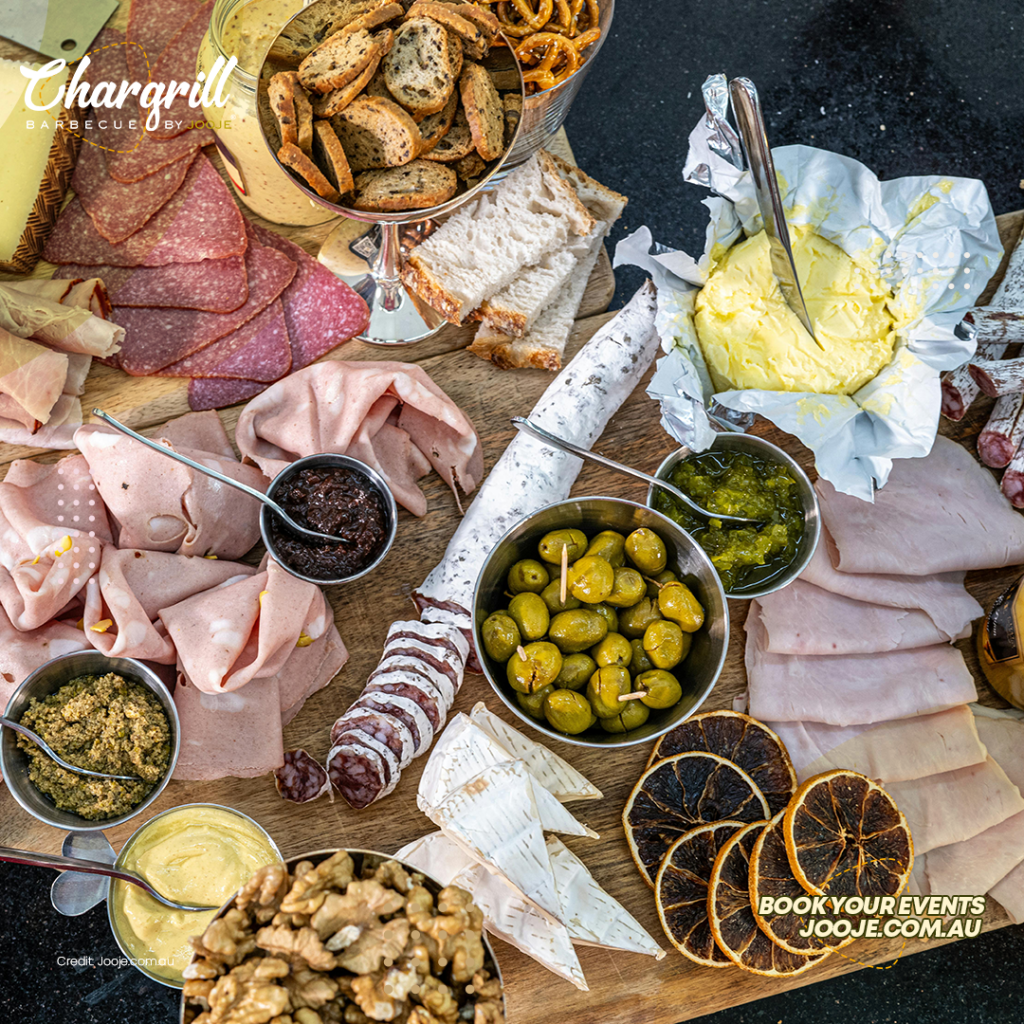
Main Course Options that should be in Wedding menu planning.
Vegetarian and Vegan Options
Offering hearty and creative vegetarian and vegan dishes ensures all guests have satisfying options. Consider dishes like:
- Vegan Mushroom Wellington: A flaky pastry filled with seasoned mushrooms and vegetables.
- Vegetarian Lasagna: Layers of pasta, ricotta cheese, and seasonal vegetables baked to perfection.
Meat and Seafood Dishes
Traditional and modern choices for meat and seafood entrees include:
- Beef Tenderloin: Served with a red wine reduction and roasted vegetables.
- Herb-Crusted Salmon: Baked to perfection and served with a lemon-dill sauce.
Cultural and Themed Menus
Incorporating regional or cultural specialties can add a unique touch to your wedding menu. For instance:
- Italian Theme: Featuring dishes like risotto, bruschetta, and tiramisu.
- Mexican Theme: Including tacos, enchiladas, and churros.
Plan for Side Dishes
Complementary Sides for Different Main Courses
Pairing sides with main courses enhances the dining experience. Examples include:
- For Beef: Garlic mashed potatoes and green bean almondine.
- For Chicken: Wild rice pilaf and roasted Brussels sprouts.
- For Fish: Quinoa salad and steamed asparagus.
Healthy and Indulgent Options
Balancing healthy sides with indulgent ones caters to all tastes:
- Healthy: Grilled vegetables, quinoa salads.
- Indulgent: Creamy macaroni and cheese, loaded mashed potatoes.
Remember to include Desserts and Sweets
Traditional Wedding Cakes vs. Modern Alternatives
While traditional wedding cakes remain popular, many couples opt for modern alternatives like:
- Cupcake Towers: Offering various flavors and decorations.
- Dessert Bars: Featuring an assortment of mini desserts like macarons, brownies, and tarts.
Unique Dessert Ideas
Unique dessert ideas can leave a lasting impression. Consider:
- Mini Cheesecake Bites: Individual servings of cheesecake in various flavors.
- Donut Wall: A fun and interactive dessert display.
Beverages & Drinks
Alcoholic and Non-Alcoholic Options
Offering a mix of alcoholic and non-alcoholic beverages ensures all guests are catered to. Consider comparing Open Bar vs. Cash Bar:
- Signature Cocktails: Custom drinks that reflect the couple’s personality.
- Mocktails: Non-alcoholic versions of popular cocktails.
Pairing Drinks with Menu Items
Pairing drinks with your menu can enhance the dining experience. For example:
- Red Wine: Pairs well with beef and lamb dishes.
- White Wine: Complements fish and chicken dishes.
- Craft Beer: A versatile option that pairs well with many foods.
Presentation and Serving Tips
Creative Serving Ideas and Presentation Styles
Creative presentation can elevate the dining experience. Consider:
- Mason Jar Salads: Layered salads served in mason jars for a rustic touch.
- Mini Appetizer Boards: Individual charcuterie boards for each guest.
Ensuring Smooth Service During the Event
Efficient service is key to a successful meal. Tips include:
- Hire Experienced Staff: Professional servers ensure smooth service.
- Create a Timeline: Outline when each course will be served to avoid delays.
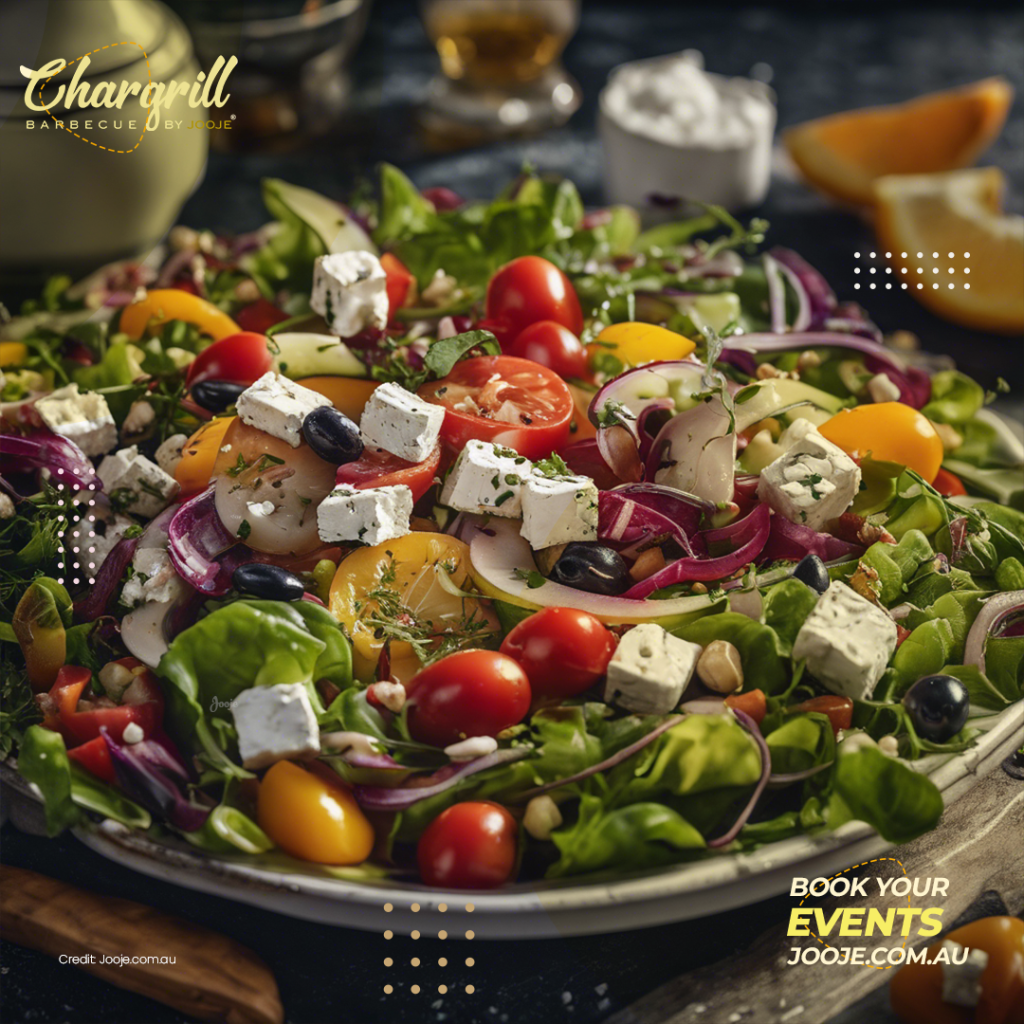
Catering to Dietary Restrictions and Special Considerations
Modern weddings often feature diverse guest lists with various dietary needs. Catering to dietary restrictions such as gluten-free, vegan, or nut-free options ensures that all guests can enjoy the meal. Offering a range of dishes that accommodate these needs without compromising on taste or presentation is key.
Examples:
- Gluten-Free Options: Grilled chicken with quinoa salad, gluten-free pasta with marinara sauce.
- Vegan Choices: Stuffed bell peppers with rice and vegetables, vegan lasagna with cashew cheese.
- Nut-Free Dishes: Herb-crusted salmon, roasted vegetables, and mashed potatoes.
Importance of Labeling and Communication
Clear labeling of dishes helps guests easily identify what they can eat. Communication with your caterer about these needs is essential to avoid cross-contamination and ensure all dietary requirements are met.
Tips:
- Use clear signage at buffet tables.
- Include a note on the menu indicating which dishes meet specific dietary needs.
- Discuss with your caterer about preparation areas to avoid cross-contact.
Catering to Dietary Needs
| Dietary Type | Options |
|---|---|
| Vegan | Stuffed Bell Peppers, Vegan Chocolate Cake, Quinoa Salad, Grilled Vegetable Skewers, Filo Tarts with Spinach and Mushrooms |
| Vegetarian | Mushroom Risotto, Filo Tarts with Kale and Feta, Stuffed Peppers, Butternut Squash Soup, Caprese Salad |
| Gluten-Free | Grilled Chicken with Quinoa Salad, Flourless Chocolate Cake, Shrimp Cocktail, Mixed Greens Salad, Baked Salmon with Vegetables |
Wedding Food Budgeting and Planning
Planning a wedding menu can be costly, but there are ways to manage your budget effectively:
- Opt for Seasonal Ingredients: They are usually less expensive and fresher.
- Simplify the Menu: Focus on quality over quantity.
- Communicate with Your Caterer: Work together to find cost-effective solutions without compromising on quality.
Budget Considerations
Here are Frugal Wedding Menu Planning Tips To keep costs down:
- Opt for fewer but higher-quality dishes.
- Consider buffet or family-style meals to reduce staffing costs.
- Use local and seasonal ingredients.
| Item | Estimated Cost (per person) |
|---|---|
| Appetizers | $10 |
| Main Course | $25 |
| Desserts | $8 |
| Late-Night Snacks | $5 |
| Drinks (Alcoholic) | $15 |
| Drinks (Non-Alcoholic) | $5 |
| Total | $68 |
Tips for Different Wedding Sizes and Styles
- Personalized, gourmet meals.
- Focus on high-quality, unique dishes.
Handling Catering for Large Weddings:
- Buffet or family-style service to streamline serving.
- Simple, crowd-pleasing dishes.
- Menu items that complement the theme (e.g., vintage, rustic, seasonal).
DIY and Budget-Friendly Options
For couples looking to save on catering costs, a DIY Wedding Buffet approach can be both fun and cost-effective. Preparing a wedding menu yourself allows for personal touches and customization.
DIY Menu Examples:
- Appetizers: Caprese skewers, bruschetta, and cheese platters.
- Main Courses: BBQ smoked ribs or chicken, vegetable stir-fry, and pasta dishes.
- Desserts: Cupcake towers, Metallic Accent Cakes, homemade cookies, and a DIY candy bar.
Budget-Friendly Catering Tips
Sticking to a budget doesn’t mean sacrificing quality or variety. There are several ways to create a memorable menu without breaking the bank.
Cost-Saving Tips:
- Buffet Style: Reduces the need for serving staff and allows guests to choose their portions.
- Seasonal Ingredients: Use seasonal produce for reducing wedding catering costs.
- Simplified Menus: Focus on a few high-quality dishes rather than a large number of options.
- Self-Service Stations: Taco bars, salad bars, and dessert stations can be both fun and economical.
Accommodating dietary restrictions through thoughtful menu planning and clear communication ensures that all guests feel included. DIY and budget-friendly options provide avenues for creativity and achieving lower than Typical Wedding Catering Costs.
Planning a wedding menu is a multifaceted task that requires careful consideration of guest preferences, dietary restrictions, and budget. From understanding your audience to exploring various menu styles, each decision shapes the dining experience at your wedding. Buffet-style dinners offer variety and ease, while plated dinners provide an elegant touch. Family-style service fosters intimacy, and food stations add a fun, interactive element.
How do you plan a wedding menu?
Planning a wedding menu involves several steps, including understanding your guest list demographics and preferences, considering dietary restrictions, and choosing the right menu style (e.g., buffet, plated, family-style). It’s essential to communicate clearly with your caterer and ensure that there are options to cater to different dietary needs.
What is the most popular wedding menu?
The most popular wedding menus often include a combination of appetizers, main courses, and desserts that cater to a wide range of tastes. Buffet-style dinners and plated dinners are both popular choices. Common dishes include beef tenderloin, herb-crusted salmon, vegetarian lasagna, and a variety of seasonal appetizers and desserts.
How much should I budget for a wedding menu?
Budgeting for a wedding menu depends on several factors, including the number of guests, the type of service (buffet, plated, family-style), and the choice of dishes. On average, couples in the U.S. spend between $30 to $70 per person on catering. Costs can be managed by choosing seasonal ingredients, simplifying the menu, and considering DIY options.
How can I accommodate dietary restrictions at my wedding?
Accommodating dietary restrictions involves offering a variety of options such as gluten-free, vegan, and nut-free dishes. Clear labeling and communication with your caterer are crucial to ensure all dietary needs are met. Including a section on the RSVP card for guests to note any restrictions can also help in planning.
References
Master the art of wedding menu planning with our ultimate guide. Explore creative menu ideas, seasonal ingredients, dietary options, and budget-friendly tips to craft the perfect wedding reception. Learn how to balance flavors, coordinate with caterers, and personalize your menu for a memorable celebration
Planning a wedding menu requires careful consideration of various factors to ensure a memorable dining experience. By understanding your audience, exploring different menu styles, and paying attention to presentation and service, you can create a feast that your guests will talk about for years to come. Whether you opt for traditional dishes or modern alternatives, the key is to tailor your menu to reflect your personal taste and the style of your wedding. If you are interested in other references, here are the URLs of the references used for crafting the in-depth article on wedding menu planning:


